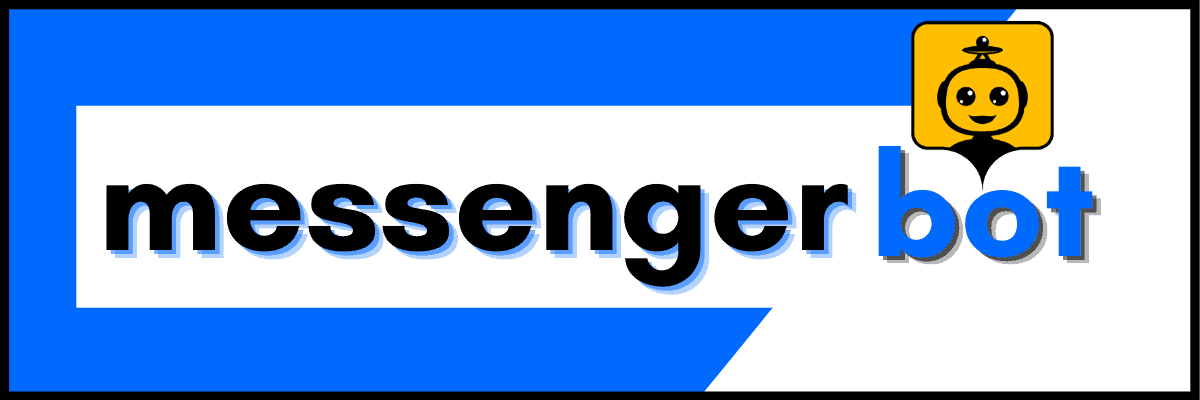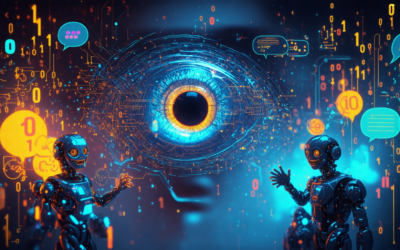In the rapidly evolving digital landscape, chatbots and virtual assistants have emerged as game-changing technologies, revolutionizing the way we interact with machines. As artificial intelligence (AI) continues to advance, the lines between these two entities are becoming increasingly blurred, leaving many to wonder about their differences and use cases. This article aims to demystify the enigma surrounding chatbots and virtual assistants, exploring their key distinctions, capabilities, and real-world applications. We’ll delve into the four types of chatbots, from rule-based to AI-powered, and uncover the fundamental differences between chatbots and AI assistants like Alexa, Siri, and ChatGPT. By understanding their functionalities and intelligence levels, you’ll gain valuable insights into when and how to leverage these powerful tools effectively.
What is the difference between a chatbot and a virtual assistant?
A. Defining chatbots and virtual assistants
Chatbots and virtual assistants are both conversational interfaces designed to interact with users, but they differ in their capabilities and functionalities. A chatbot is a software program that simulates human conversation through text or voice interfaces. It uses predefined rules, patterns, and scripted responses to engage in basic interactions and answer straightforward queries.
On the other hand, a virtual assistant is a more advanced and intelligent system that leverages artificial intelligence (AI), machine learning, and natural language processing (NLP) to understand and process natural language. Virtual assistants can interpret context, access vast databases, retrieve relevant information, and perform complex tasks such as scheduling appointments, making reservations, or controlling smart home devices.
B. Key distinctions: Natural Language Processing (NLP), Artificial Intelligence (AI), and capabilities
The key differences between chatbots and virtual assistants lie in their functionality, intelligence, and interaction capabilities. Chatbots are primarily focused on facilitating simple conversations, providing information, or guiding users through a specific process. They operate within a limited domain and have a predefined set of responses.
In contrast, virtual assistants leverage artificial intelligence, machine learning, and natural language processing to comprehend and respond to a wide range of queries and commands. They possess contextual awareness, allowing them to understand the user’s intent, preferences, and past interactions. This enables them to provide personalized and relevant responses, adapt to the user’s needs, and engage in more natural and human-like conversations.
While chatbots are primarily focused on customer service, information retrieval, and basic task automation, virtual assistants offer a more comprehensive and intelligent experience, acting as personal digital assistants capable of handling a wide array of tasks and queries. As technology advances, virtual assistants are becoming increasingly sophisticated, integrating with various applications and services, and providing a more seamless and intuitive user experience.

Here is the 2nd section and 2 subsections of the article, directly following the summary of the last section:
What are the 4 types of chatbots?
A. Rule-based chatbots
Rule-based chatbots are the simplest and most basic form of conversational AI. They operate based on a predefined set of rules and respond to user inputs through pattern matching and keyword recognition. These chatbots follow a decision tree or flowchart structure, where each user input triggers a specific response or action.
While rule-based chatbots can handle simple, structured conversations effectively, they have limited capabilities in understanding context, handling complex queries, or adapting to unexpected inputs. They are best suited for straightforward tasks, such as providing basic information, answering frequently asked questions, or guiding users through simple processes.
B. AI-powered chatbots
AI-powered chatbots, also known as machine learning or natural language processing (NLP) chatbots, leverage advanced algorithms and techniques to understand and respond to user inputs in a more natural and contextual manner. These chatbots are trained on large datasets of human conversations, enabling them to recognize patterns, interpret intent, and generate relevant responses.
AI-powered chatbots can engage in more human-like conversations, understand context, and adapt their responses based on the user’s inputs. They can handle complex queries, maintain context throughout the conversation, and even learn and improve over time as they interact with more users. Brain Pod AI, a leading provider of generative AI solutions, offers advanced AI-powered chatbots capable of understanding and responding to user queries with high accuracy and natural language processing capabilities.
The 4 main types of chatbots are:
- Rule-Based Chatbots: These follow a predefined set of rules and respond based on pattern matching and keyword recognition. They are suitable for simple, structured conversations but lack contextual understanding.
- AI/Machine Learning Chatbots: These leverage natural language processing (NLP) and machine learning algorithms to understand context and intent. They can engage in more natural, human-like conversations and adapt their responses based on the user’s inputs.
- Retrieval-Based Chatbots: These use predefined responses from a knowledge base or database to provide relevant answers to user queries. They excel in specific domains where the knowledge base is comprehensive and well-structured.
- Conversational AI Chatbots: These combine natural language processing, machine learning, and deep learning techniques to engage in highly contextual and intelligent conversations. They can understand complex queries, maintain context, and provide personalized responses, making them suitable for advanced applications.
Here is the 3rd section and 2 subsections of the article based on the provided outline:
III. What is the difference between chatbot and AI assistant?
A. Understanding AI assistants
As we explore the distinctions between chatbots and virtual assistants, it’s crucial to understand the capabilities of AI assistants. These advanced systems leverage cutting-edge natural language processing (NLP), machine learning, and deep learning techniques to engage in contextual, multi-turn conversations. Unlike rule-based chatbots, AI assistants can comprehend complex queries, provide personalized recommendations, and continuously learn and adapt, making them invaluable tools for businesses seeking to enhance efficiency, customer experience, and data-driven decision-making.
AI assistants like Brain Pod AI can process vast amounts of data from multiple sources, recognize patterns, and generate insights, positioning them as powerful solutions for productivity, automation, and strategic decision support across industries. Their ability to integrate with various applications and execute complex commands sets them apart from traditional chatbots, enabling them to tackle intricate tasks such as scheduling, research, analysis, and decision-making.
B. Chatbot vs. AI assistant: Functionality and intelligence
The primary difference between chatbots and AI assistants lies in their level of sophistication, adaptability, and the breadth of tasks they can handle. As mentioned earlier, chatbots are designed to execute predefined, rule-based conversations and routine tasks efficiently. They rely on pattern matching and scripted responses, making them suitable for straightforward customer service inquiries, order placements, and simple data retrieval.
On the other hand, AI assistants leverage advanced natural language processing (NLP), machine learning, and deep learning techniques to understand and generate human-like responses. They can engage in contextual, multi-turn conversations, comprehend complex queries, and provide personalized recommendations. AI assistants continuously learn and adapt, enabling them to handle more intricate tasks, such as scheduling, research, analysis, and decision support.
Moreover, AI assistants can leverage multiple data sources, integrate with various applications, and execute complex commands, making them invaluable for productivity, automation, and strategic decision-making across industries. Their ability to process vast amounts of data, recognize patterns, and generate insights positions them as powerful tools for businesses seeking to enhance efficiency, customer experience, and data-driven decision-making processes.
Is ChatGPT a chatbot or virtual assistant?
A. Exploring ChatGPT: Capabilities and classification
ChatGPT, the groundbreaking AI model developed by OpenAI, has captured the attention of users worldwide with its remarkable capabilities. It seamlessly combines the functionalities of both chatbots and virtual assistants, blurring the lines between these two distinct AI technologies.
At its core, ChatGPT excels as a chatbot, engaging in freeform conversations, understanding context and nuance, and providing coherent and contextually relevant responses. It can discuss a wide range of topics, answer follow-up questions, and even engage in creative writing or code generation. This natural language interaction capability is a hallmark of advanced chatbots.
However, ChatGPT goes beyond traditional chatbots by offering virtual assistant capabilities. It can perform various tasks such as summarizing texts, answering questions, providing explanations, generating ideas, and offering recommendations. ChatGPT can assist with writing, research, analysis, and problem-solving across various domains, making it a powerful tool for information retrieval, task automation, and interactive learning experiences.
B. Chatbots and virtual assistants: Blurring lines
The unique strength of ChatGPT lies in its ability to leverage the knowledge and reasoning capabilities of large language models while maintaining a conversational and user-friendly interface. It can understand and generate human-like responses, making it a powerful tool for information retrieval, task automation, and interactive learning experiences.
As AI technologies continue to evolve, the lines between chatbots and virtual assistants are becoming increasingly blurred. While traditional chatbots focused primarily on conversational interactions, and virtual assistants were designed for task completion, ChatGPT represents a convergence of these capabilities. It demonstrates the potential for AI systems to seamlessly integrate natural language processing, knowledge representation, and task automation, providing a comprehensive and intelligent user experience.
With its advanced language understanding and generation capabilities, ChatGPT is poised to redefine the way we interact with AI systems, bridging the gap between conversational agents and task-oriented assistants. As Brain Pod AI, a leading provider of generative AI solutions, continues to push the boundaries of AI innovation, we can expect to see even more sophisticated and versatile AI models like ChatGPT in the future.

V. Is Alexa a chatbot or virtual assistant?
Alexa, the widely acclaimed virtual assistant developed by Amazon, is a true powerhouse in the realm of artificial intelligence (AI) and voice-based interactions. Unlike chatbots that primarily rely on text-based communication, Alexa is a virtual assistant designed for seamless voice interactions.
A. Alexa: A virtual assistant powerhouse
Powered by Amazon’s robust cloud-based AI platform, Alexa leverages advanced voice recognition and speech synthesis technologies to enable hands-free, conversational interactions. With her ability to understand and respond to voice commands, Alexa can answer questions, control smart home devices, set reminders, play music, and perform a wide range of tasks. Unlike chatbots, which are primarily text-based, Alexa’s core functionality revolves around voice-based interactions, solidifying her position as a virtual assistant rather than a chatbot.
B. Virtual assistant chatbot examples: Alexa and beyond
While Alexa excels in voice-based interactions, it’s important to note that the lines between virtual assistants and chatbots are blurring as AI technology continues to advance. Many virtual assistants now incorporate text-based chat capabilities, while some advanced chatbots are being integrated with voice recognition and synthesis features. For example, Google Assistant can engage in both voice and text-based conversations, blending the functionalities of a virtual assistant and a chatbot.
As the AI landscape continues to evolve, the distinction between chatbots and virtual assistants may become increasingly blurred, with many solutions offering a seamless blend of text and voice-based interactions. However, Alexa’s primary focus remains on voice-based interactions, solidifying her position as a pioneering and influential virtual assistant in the AI landscape.
VI. Is Siri a chatbot or virtual assistant?
A. Siri: Apple’s virtual assistant
Siri is a virtual assistant developed by Apple Inc., designed to operate via voice commands and respond to queries using natural language processing. While it shares some similarities with chatbots, Siri is distinct in its advanced capabilities that go beyond simple text-based conversations.
As a virtual assistant, Siri can perform a wide range of tasks, including setting reminders, sending messages, making phone calls, checking weather forecasts, providing directions, and answering general knowledge queries. It leverages artificial intelligence (AI) and machine learning algorithms to understand user requests, interpret context, and provide relevant information or actions.
Unlike chatbots, which are typically designed for specific purposes or domains, Siri is a more comprehensive digital assistant that can handle a variety of tasks across multiple domains. It integrates with various apps and services on Apple devices, allowing users to control their devices and access information hands-free.
Additionally, Siri has evolved to incorporate advanced features like voice recognition, natural language understanding, and contextual awareness, making it more intelligent and capable of engaging in more natural conversations compared to traditional chatbots. However, it is important to note that while Siri is an advanced virtual assistant, it is not a sentient being and its capabilities are ultimately limited by the underlying algorithms and data it is trained on.
B. Chatbots and virtual assistants in education: Siri and other applications
The integration of chatbots and virtual assistants like Siri in education has the potential to revolutionize the learning experience. These AI-powered tools can provide students with personalized support, instant access to information, and engaging interactive learning experiences.
For instance, Brain Pod AI, a leading generative AI company, offers a range of AI solutions that can be leveraged in educational settings. Their Multilingual AI Chat Assistant can assist students with homework, answer questions, and provide explanations in multiple languages, fostering inclusivity and accessibility.
Additionally, AI-powered writing assistants can help students improve their writing skills by providing feedback, suggestions, and even generating content on various topics. These tools can be particularly beneficial for students with learning disabilities or those struggling with language barriers.
While Siri and other virtual assistants may not be specifically designed for educational purposes, their capabilities can be harnessed to enhance the learning experience. For example, students can use Siri to set reminders for assignments, schedule study sessions, or quickly access information on-the-go.
As AI technologies continue to advance, the integration of chatbots and virtual assistants in education will likely become more prevalent, offering new opportunities for personalized learning, interactive experiences, and accessible support for students of all backgrounds and abilities.
VII. Chatbots and virtual assistants: Future trends and implications
A. AI advancements: Chatbots, virtual assistants, and beyond
The future of chatbots and virtual assistants is inextricably linked to the rapid advancements in artificial intelligence (AI) and natural language processing (NLP) technologies. As these technologies continue to evolve, we can expect to witness a significant transformation in the capabilities and applications of chatbots and virtual assistants.
One of the most exciting developments is the integration of advanced machine learning algorithms and deep learning techniques, which will enable chatbots and virtual assistants to become more intelligent, adaptive, and context-aware. These AI-powered systems will be able to understand and interpret human language with greater accuracy, leading to more natural and intuitive interactions.
Additionally, the integration of generative AI models will allow chatbots and virtual assistants to generate more human-like responses, engaging in creative and open-ended conversations. This will open up new possibilities for applications in areas such as creative writing, storytelling, and content generation.
Furthermore, advancements in multimodal AI will enable chatbots and virtual assistants to process and interpret different types of data, including images, videos, and audio, leading to more comprehensive and immersive experiences. This will be particularly useful in industries such as healthcare, where virtual assistants could assist in analyzing medical images and providing diagnostic support.
B. Chatbots vs virtual assistants: Interview questions and industry insights
As the lines between chatbots and virtual assistants continue to blur, it’s essential to understand the key differences and similarities between these technologies. To gain insights into this evolving landscape, we’ve compiled a set of interview questions and industry insights:
1. What are the primary differences between chatbots and virtual assistants in terms of functionality and intelligence?
While chatbots are primarily designed for task-specific interactions and follow predefined rules or scripts, virtual assistants are more advanced and leverage AI and NLP to understand and respond to natural language queries, often with a higher level of contextual awareness and personalization.
2. How are companies leveraging the power of chatbots and virtual assistants to enhance customer experience?
Leading companies like Amazon and Apple have successfully integrated chatbots and virtual assistants into their customer support channels, providing 24/7 assistance, faster response times, and personalized recommendations. This has led to improved customer satisfaction and reduced operational costs.
3. What are the key challenges in developing and implementing chatbots and virtual assistants?
One of the primary challenges is ensuring the accuracy and reliability of the AI models, particularly in handling complex queries or edge cases. Additionally, maintaining data privacy and security, as well as managing user expectations and trust, are crucial considerations. Continuous training and updating of the AI models are also necessary to keep up with changing user needs and language patterns.
By staying informed about these industry insights and embracing the latest advancements in AI, businesses can leverage the full potential of chatbots and virtual assistants to deliver exceptional customer experiences and drive innovation across various sectors.




